Maison Aribert, Uriage | My Last Restaurant of 2020, A-/B+
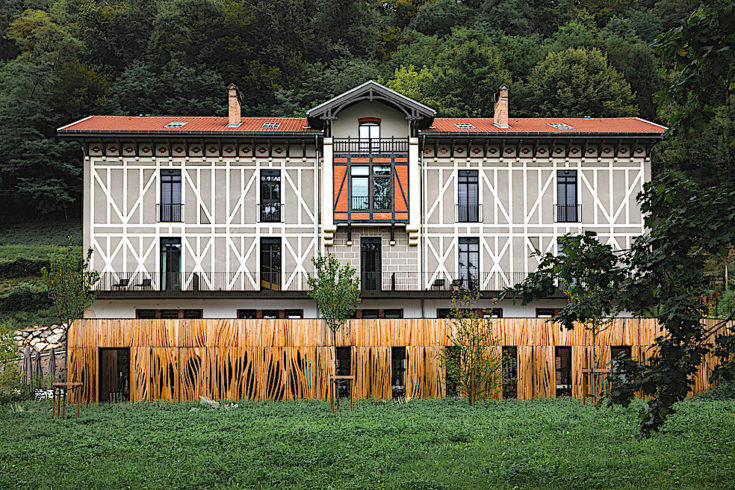
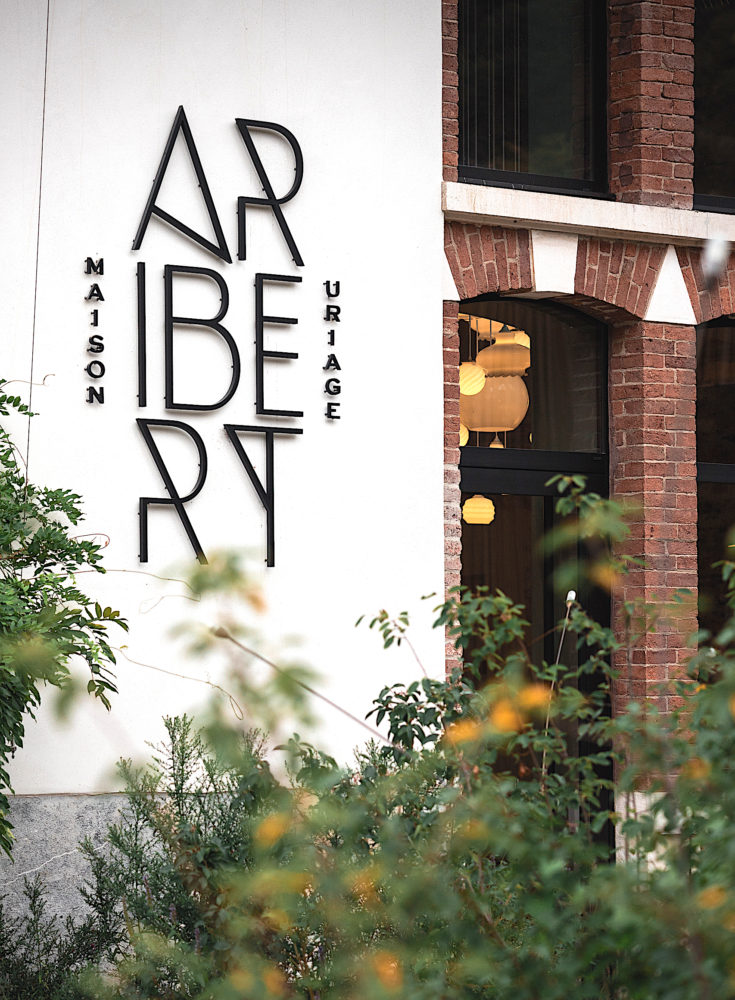
During the year without restaurants, it turns out the last one I would go to in 2020 was the Maison Aribert, a Michelin two-star table in the operetta-set-like little spa town of Uriage-les-Bains, which is a few miles outside of Grenoble in the Vercors.
In retrospect, I wonder if we weren’t guided by some sort of subliminal prescience, since the weekend after our trip away, France entered its second lockdown of 2020 on October 30. Once again, all of Gaul’s restaurants and bars were required to shutdown; as of this date, they are expected to remain closed until at least mid-January 2021. One way or another, we were itching for a change of scene after having spent most of the year in our house in a village outside of Uzes in the Midi after the first lockdown ended in late May.
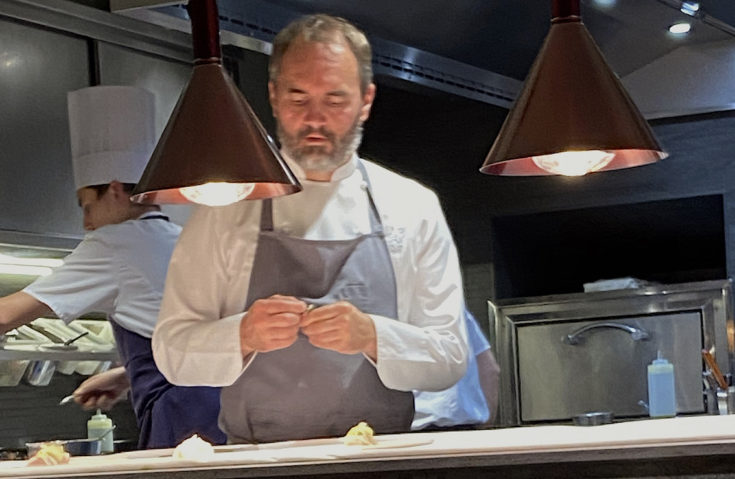
I’d read a lot about chef Christophe Aribert, too, and having previously had an only dimly remembered experience of his cooking from the short stint he did as chef at L’Opéra Restaurant, the hapless restaurant now known as Coco at the Opéra Garnier in Paris, I was curious to discover his food. So we left home on a beautiful sunny day when the vineyards surrounding our village had turned into a sweeping bronze-colored carpet rolling off in every direction, including to the distant violet-colored Cevennes mountains on the horizon, and drove north to Valence. The idea was that we’d dine at Maison Aribert and spend the night there, and then visit the Musée de la Grande Chartreuse in Saint-Pierre-de-Chartreuse and then Chartreuse liqueur aging cellars in Voiron and Chocolats Bonnat, one of France’s best chocolate-makers, in the same town.
As is my predilection, the French countryside read en route as a succession of delicious foods and wines and remembered meals. The Rhone Valley resonated with the names of many of my favorite wines—Chateauneuf du Pape, bien sur, but also Cairanne, Gigondas, Vinsombres, and Beaumes-de-Venise, among others. A sign indicating the route to Sisteron brought back the best lamb I’ve ever eaten, a succulent slow-roasted shoulder of spring lamb from that town at La Bonne Étape, while the exit to Romans, made me want its tiny cheese-filled ravioli, and a sign for Saint Marcellin brought on a desperate craving for one of my favorite cheeses. More discretely, the road leading from Valence to Grenoble was lined with plantations of walnut trees, which produce the best of these nuts to be found anywhere in the world (F.Y.I., French walnut producers in the Dauphine have had a hard time of it in the face of competition from California and China, but their more expensive product, which has an Appellation d’Origine Contrôlée, has an infinitely better flavor and texture).
I also found myself eagerly looking forward to eating a meal I hadn’t cooked, since as much as I love to cook, I’ve never cooked more intensely in my life than I have this year. And recently I’ve been missing restaurants, and not just for their food, but as the most vital social fixture in my life and places that have fascinated and delighted me ever since I was a child.
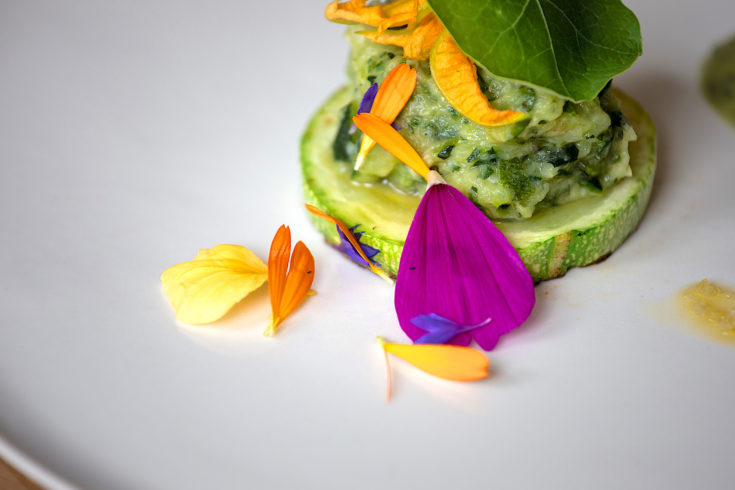
Before puberty lit the fuse of sexuality, food was the vector for sating whatever awkwardly self-conscious sensuality I may have had, and restaurants offered stages for cameo performances that brought self-affirmation and the hope of a larger and more glamorous existence than those of the adults who surrounded me. To be sure, there actually were some rather glamorous people in our town, but most of them had sort of accidently washed up there after the drama of storms and battles elsewhere made them grateful for its silence and primness, a quality they were also wryly amused by.
So I’ve always loved restaurants, beginning with the homely ones that were only occasionally available to me growing up in southwestern Connecticut. I loved Howard Johnson’s—one of America’s original quality- casual restaurant chains, for its terrazzo floors, fries, burgers and peppermint-stick ice cream drowned with hot fudge sauce; the Apizza Center, which produced some of the best ‘pies’ in the pizza belt of pizza-loving Connecticut; and West Lake, a Cantonese restaurant with exquisitely good food we most often ate spooned out of white-paper takeout containers with little wire handles. Even today, thinking about West Lake’s egg foo yung, shrimp toast, egg drop soup, egg rolls, and shrimp in lobster sauce makes my mouth water.
American restaurant culture really blossomed at the same time that I became more and more interested in food, too. If I discovered my passion for restaurants during a first teenaged trip to Europe in 1972, they became a regular part of my life when I went to college. There were modish places like Fitzwilly’s, the first puckishly hip restaurant in Northampton, Massachusetts with its exposed brick walls, spider plants hanging in macrame holders, cheeseburgers in baskets lined with sheets of waxed paper and then elegant restaurants like the expensive Café Budapest in Boston. Moving to New York City after college, I discovered myself and the great metropolis through its restaurants, including places like
Ruskay’s, the supremely bohemian chic restaurant on the Upper West Side with candles that guttered over glass-topped tables and live musicians in a mezzanine, holes in the wall like the Latino-Chinese Flor de Mayo (www.flordemayo.com) and magnificent but wiltingly expensive French cooking at restaurants like Lutèce.
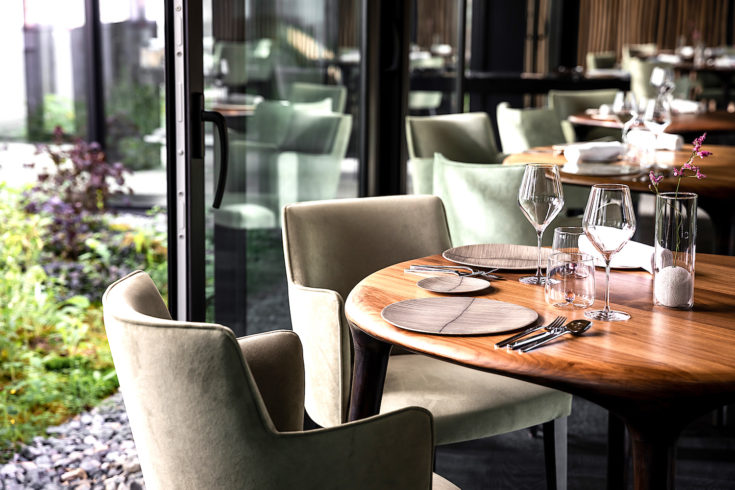
And then I did it again when I moved to London—discovered a city through its restaurants, and another time when I arrived in Paris in 1986. Now with dusk falling on an October day, I was ready to take on the best table in Uriage-les-Bains.
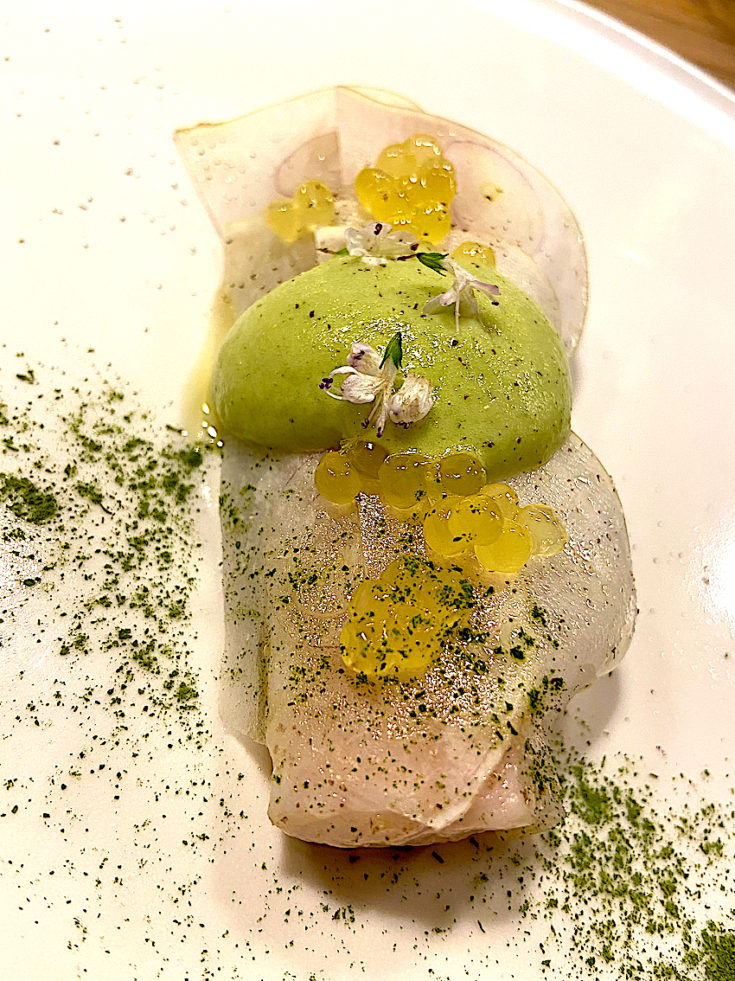
Set on a hillside, the Maison Aribert occupies a handsomely restored former 19th century curists’ hotel, which now offers very five comfortable rooms with Swedish made Hastens beds and lovely views over the surrounding park. Aribert’s restaurant is located at the foot of the hotel in a newly constructed pavilion that is strikingly covered with rough-sawn chestnut planks.
This project represents a triumphant homecoming for Aribert, who grew up here in the Isere as the son of parents who ran a hotel-restaurant and the grandson of a grandfather who was a vegetable farmer. Cooking was not the first ambition of this mountain man, but when a knee injury doomed his hopes of making a career as a skier, he eventually ended up in the kitchen. He worked at a variety of restaurants in Paris, including the kitchens of the Hotel de Crillon when Christian Constant, the father of the modern bistro movement, was there, and La Tour d’Argent before a desire to return to the mountains he loves so much propelled him to accept a job as sous-chef to Philippe Bouissou at the chic Napoleon III style Grand Hôtel d’Uriage-les-Bains in 1997. The pair of chefs won a Michelin star in 2000 and a second one two years later. Aribert took over after Bouissou retired and the restaurant retained its two stars.
Eventually, though, Aribert wanted his own restaurant, and so the Maison Aribert opened in 2019, and the chef kept the two Michelin stars he’d held in his previous post.
Hungry that night, we decided upon the eight-course 200 Euro Menu Degustation, even though I had a qualm or two. One of the many things I’ve learned most intently during a year that’s been nearly devoid of restaurants is that most tasting menus are much too long and over-wrought. This is because they’re the apotheosis of what I describe as show cooking, or a carefully plotted culinary performance that’s intended to make you marvel. In contrast, traditional cooking follows established recipes with the intention of feeding you something deeply satisfying and delicious. The best cooking, of course, manages to do both, to wit, leave you deeply admiring of the chef’s imagination, originality and technical skills at the same time that you’re swooning from some spectacularly good food.
Since the world has so tilted towards show cooking for the last thirty years, a development accelerated by the fairy-tale version of what it means to be a cook peddled with such success by food television, I somehow expected a Byronic flourish as our meal at Maison Aribert began that night. But I was wrong. Aribert’s first dish was as poignant as a naked angel. A small piece of locally raised trout had been cooked to the texture of a cloud, which was made earthbound only by the earthiness of a pleasantly puckering sorrel sauce, fine slices of turnip, blanched cabbage leaves and nasturtium flowers.
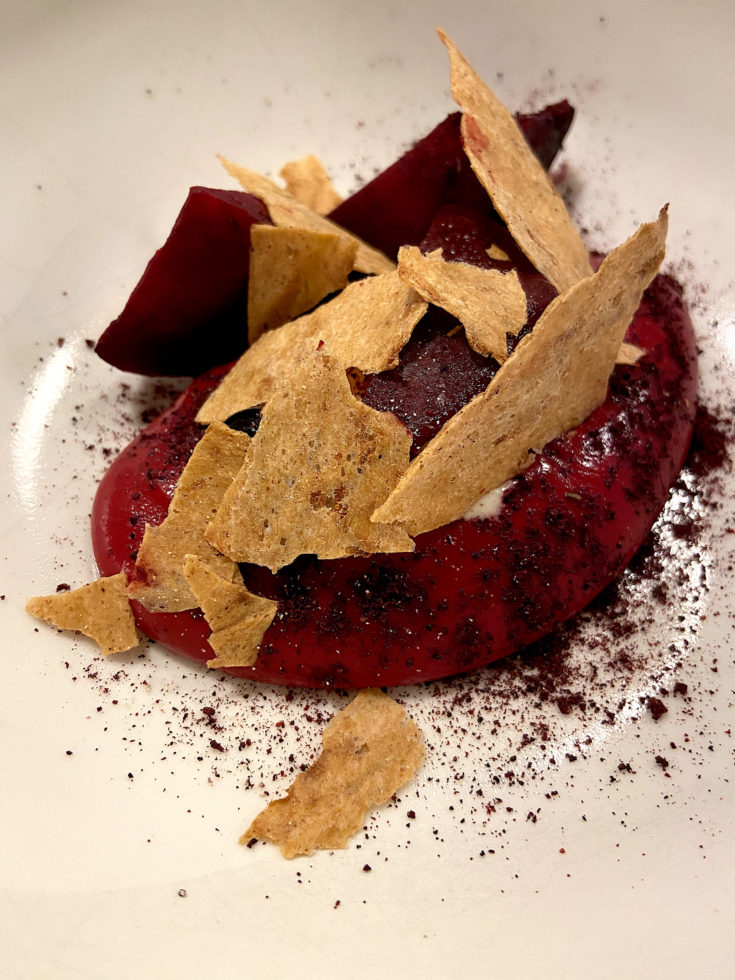
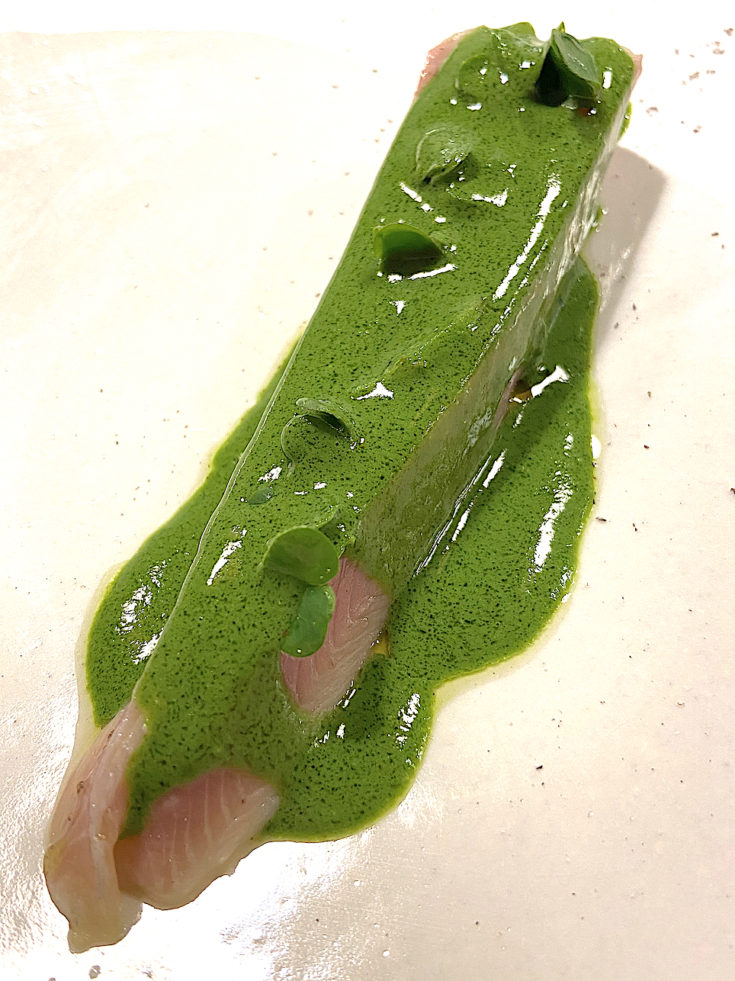
Next, a more assertive dish of beets teased by the gentle heat of horseradish and the sweet astringency of a black currant sauce. And the chef played on with a superb dish of brook trout dressed in a bright green sauce of parsley and haricots verts that registered on the palate some kind of vegetal version of mink.
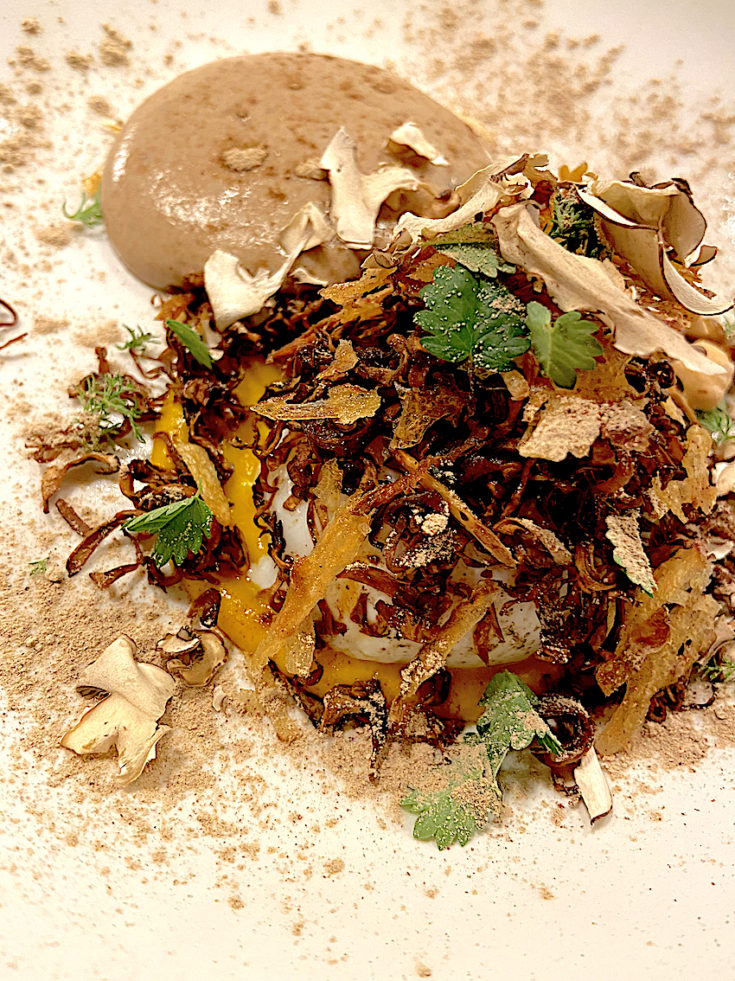
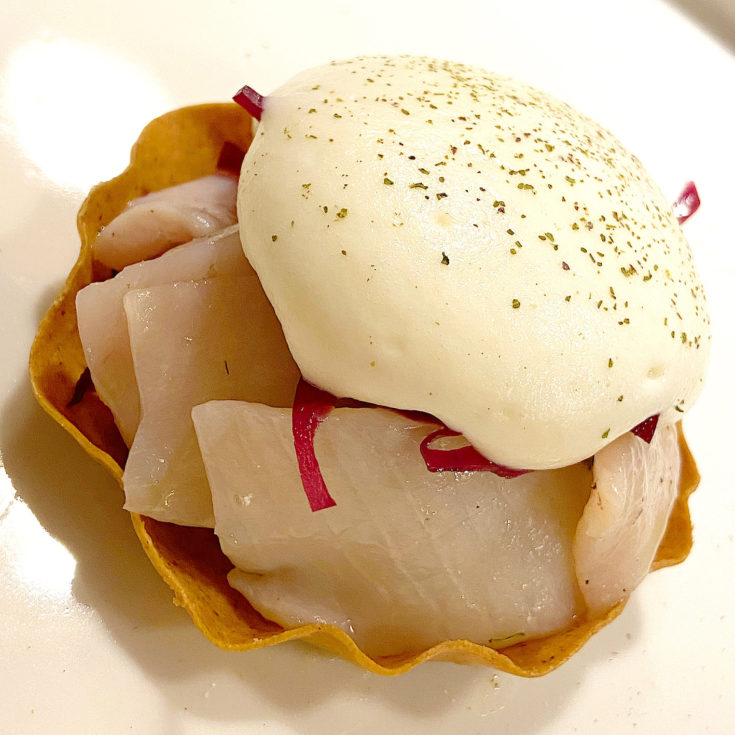
The scales tipped back and forth between the earthy and the empyrean again with a coddled egg with wild mushrooms and herbs being followed by a buckwheat tartelette filled with the perch bellies on a bed of sauteed white onions under a fluffy duvet of celeriac foam. As exquisite as all of these dishes were, at this point in the meal I found myself thinking of something chef Yannick Alleno once said to me, which is that eventually during a tasting menu you have to reach a place where you feel you’ve arrived at the main course; otherwise the meal becomes completely ephemeral and more than a little effete.
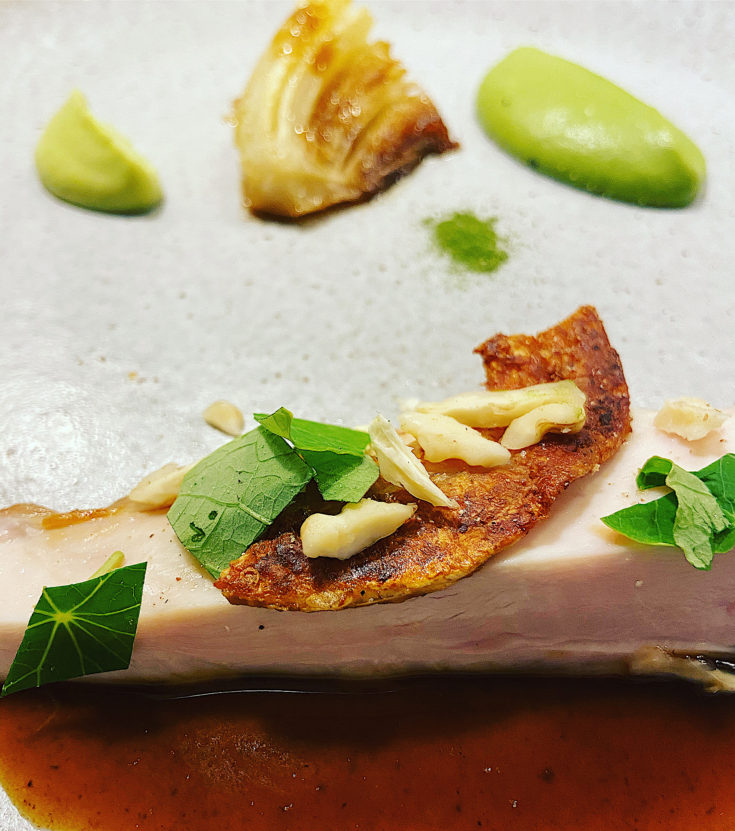
Almost on cue, I was served a filet of poached roasted local free-range chicken with a lush dark- brown sauce made from the bird’s own jus seasoned with lemongrass and savory. This was the destination of the meal, and it was a potently lyrical expression of both Aribert’s superb technical skills and his deep love of the terroir of La Chartreuse.
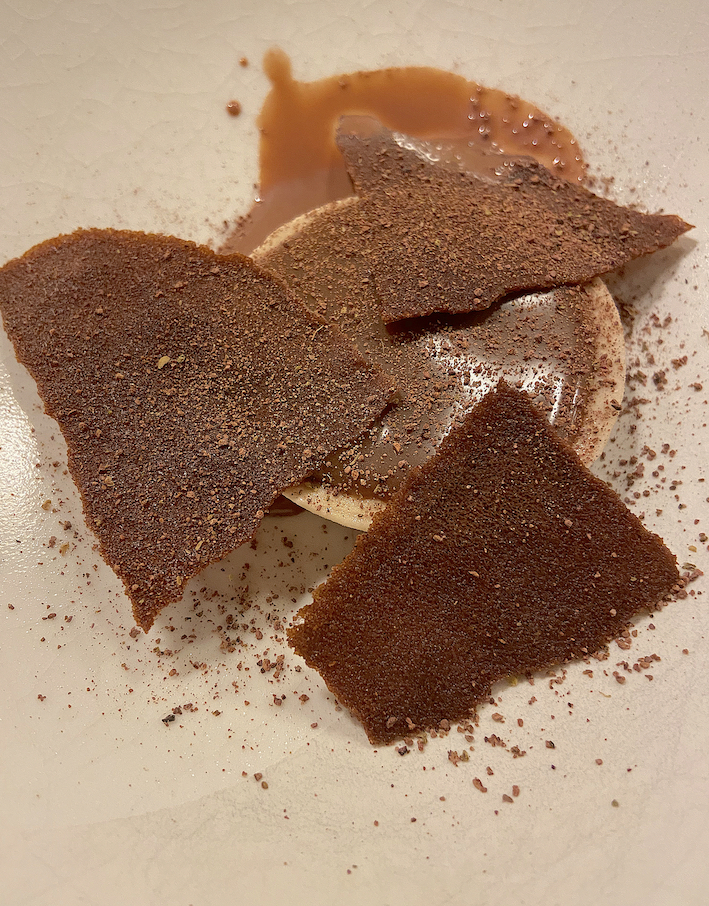
Now with the chef off stage, the meal concluded with an expectedly brilliant cheese trolley—this little resort town is surrounded by some of the greatest cheese-producing towns of France, and then an oddly abstract three-part dessert, which included a chocolate composition and another one of
pleasantly tart apples.
The only blemish on our meal was the decidedly dyspeptic sommelier; otherwise it was a wonderful experience, which proved that Aribert is doubtless well on his way to winning a third Michelin star. N.B. Though hardly cheap, it’s also worth pointing out that this tasting menu at Maison Aribert was relatively good value for the money when compared to what a similar meal would cost in Paris or on the Cote d’Azur.
280 Allée du Jeune Bayard, Uriage-les-Bains, Tel. (33) 04 58 17 48 30, www.maisonaribert.com, Lunch menus 99 Euros and 125 Euros; dinner menus 150 Euros, 180 Euros, 200 Euros.




